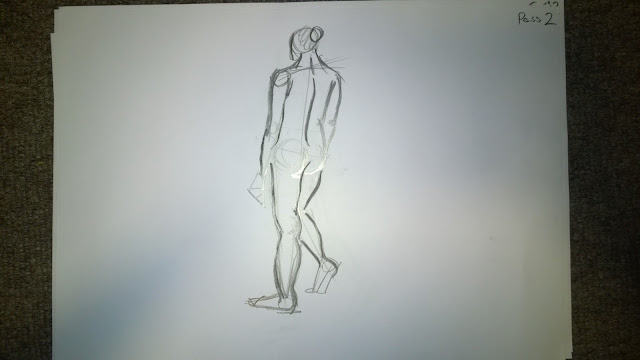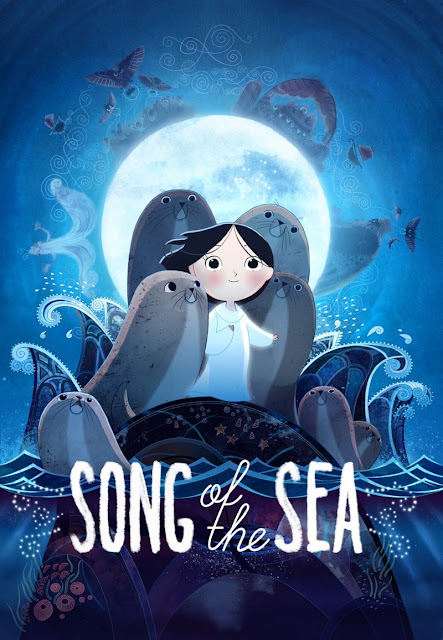English National Ballet
27th November 2015
Introduction
This was an optional session where we were able to view a ballet dancers in the Palace Theater as they prepare for the shows that night. This was an extension on our life drawing sessions and a further challenge to observe the motions of the dancers and capture them in our pieces.
[Palace Theater Lobby]
Session
Creative Drawing Exercise (Introduction)
We started with a warm-up exercise before we went to the dancers. We tried a range of techniques with different mediums to show that there are many way to observe and capture the dancers. New techniques included: using two pens and using only one line with Biro and pencil. The two pen technique means that I had to hold two pens at the same time to draw the line soft the dancer's, this produced two lines on the page which created a ghost of the original line. This is an effective way of capturing motion because the lines represent the motion. Moreover, because I was holding two pens at once, I could not hold them traditionally and had to use the whole of my arm to draw the lines.
The one line Biro technique meant that I could not remove the pen from the page once they made contact; and I had to draw what I saw. This created a very fluid and 'connected' piece which looked rather organic. However it felt very restrictive because I have to think where I am going to draw next (piece by piece) and because it was a single line, i'd have to stop to think where id go next without pausing.
[Creative Drawing Introduction - Pencil, Charcoal, Coloured Pencil and Blue Biro]
Page 1- Warm Up Stage
This was the first series of sketches I did in the session. As I was still 'warming-up' these sketches are not clear and there are a number of clear improvements I would make such as completion, detail etc. I focused on the form of the dancers as they were mostly still using the stands to balance.
[Page 1 W.U.S - Pencil and Charcoal]
Page 2 - Warm Up Stage Continued
This is the continued page of initial sketches where the dancers were still warming up and using the stands to help them balance.
[Page 2 Warm Up Stage Continued - Pencil]
Page 3 - Exploring Static vs. Motion
This next page is of an idea I had when observing the dancers. While at the stands i found that the dancers had very static parts of their bodies while maybe a limb or two would be very active. Therefore I decided to draw the head, torso, right arm and right leg first, and then I drew the positions of the left arm and left leg therefore the one sketch would have three or four arms and legs on one side. I found this easier to draw and I found it an easier way to portray motion.
[Page 3 Exploring Static vs. Motion - Pencil and Charcoal]
Page 4 - Exploring Static vs. Motion Continued
This page is when I experimented with the one line Biro technique. I drew with a single line and very looked at the paper, always observing the dancers. Adopting the same idea as the previous page and applying this new technique produced these strange sketches.
[Page 4 Exploring Static vs. Motion Continued - Blue Biro]
Page 5 - More Poses; Contrast of Leg Positions
This page was soon after they had moved the bars for the dancers to lean on and now the dancers were moving much more. Therefore this made it much harder to draw them. Therefore these draws are not the best but I tried to capture the dancers positions in a single point in time that would portray movement. In addition I tried to capture the extreme positions of the dancers legs because very quickly they would be outstretched and then brought and folded under their bodies.
[Page 5 More Poses; Contrast of Leg Positions - Pencil and Charcoal]
Page 6 - Experimenting One Line Biro
This is another page when I tired to use the one lined Biro technique again. This time I chose to use this technique because the dancers were now spinning on the spot; there was no significant time when they were still. So I felt it was most appropriate to use technique which expresses a lot of motion even if the figure is not completely clear.
[Page 6 - Experimenting One Line Biro - Blue Biro]
Page 7 - More Poses
This page contains more figurative sketches because the dancers were still moving a lot around the stage but now had very distinctive stages and extremes which I tried to capture very quickly in these sketches.
[Page 7 - More Poses - Pencil and Charcoal]
Page 8 - Layered Experimentation
This is another page with a wider range of mediums because I wanted to experiment what they may look like all together. Therefore I used pencil to map the initial structure of the dancer, then using blue Biro to portray the motion. This was at a time when the dancers were moving very quickly again.
[Page 8 Layered Experimentation - Pencil, Charcoal and Blue Biro]
Page 9 - More Poses and Limbs
This page I found the session very challenging because I found it difficult to concentrate on the dancers as they moved very quickly and I felt I couldn't keep up with them. Therefore I tried to capture one aspect of them as they moved. On this page this shows I tried to follow the arms of the dancers and where they went and what shapes they made.
[Page 9 - More Poses and Limbs - Pencil and Charcoal]
Page 10 - Contrast of Mediums
This page shows further experimentation with the mediums and i did this by capturing a single pose of the dancers (because they had different groups performing the same section) and I tried to capture that moment with three different mediums: pencil, Biro and charcoal.
[Page 10 - Contrast of Mediums - Pencil, Blue Biro and Charcoal]
Page 11 - Mirrored Leaps
This page I focused on the shape and the single moment of a dance to try and portray movement. This is because the dancers did a very interesting pose where they jumped a certain direction and the limbs would all be delayed and follow the body behind and yet land completely in control. Therefore i wanted to capture this pose and I chose to mirror it.
[Page 11 - Mirrored Leaps - Pencil and Charcoal]
Page 12 - More Poses
This was the final page of the session and at this point I found it extremely difficult to concentrate because the dancers were moving too quickly. Therefore this is a collection of very quick pencil and charocal sketches of the dancer's extreme positions.
[Page 12 - More Poses - Pencil and Charcoal]
Conclusion
In conclusion this session was very challenging and yet very enjoyable. I also found that the dancers were amazing in how they moved and I now have a greater administration to ballet dancers. I found this session very difficult because of how much the dancers were moving and because I was trying to capture a single pose or extreme of a dancer, I only had seconds to remember a pose and try to capture it for the next pose. Reflecting on this I realise that I need to observe the motion of the dancers rather than the shapes and forms. This is because a motion lasts much longer than a particular pose within that motion. An example of this could be rather than draw the arms in a pose of a jump, I would next time draw the motion of the jump (anticipation, air time, landing).
I feel that if I tried the 'motion tactic' my work will be far more effective than this session.
I feel that if I tried the 'motion tactic' my work will be far more effective than this session.






















































